June 2nd 2023, Ilwaco, Washington state
I scooted up Interstate 5 and went straight through, or rather past, the Oregon capital, Portland. My loss, I expect, but I just couldn’t see any reason to delve into another city, so I kept on going — crossing the Oregon-Washington bridge that uses Hayden Island in the middle of the Columbia River like a hop-scotch square to get to the other side — which is Washington state. I had no idea where I was going, let along why, and so just let the road take me. Which it did, to a place named Longview where my attention was grabbed by the massive timber operation on the banks of the Columbia, a mighty river and at this stage nearing its estuary into the Pacific.
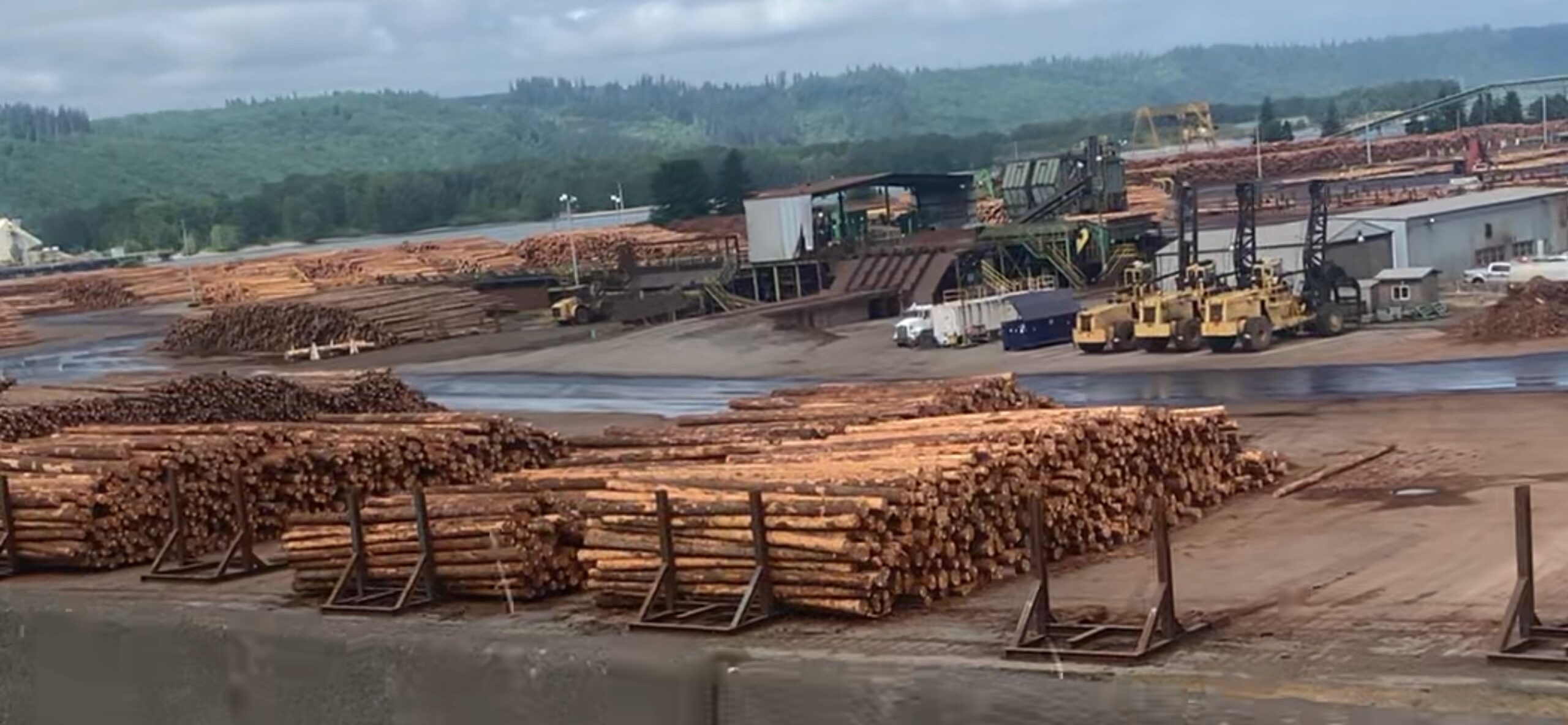
From northern California onwards, the economic importance of timber for the whole Pacific Northwest was becoming more and more evident. Firstly, and most noticeably for me, was the increasing number of timber trucks on the road, big long lorries carrying lengthy tree trunks to the processing mills. Then, of course, the mills began to proliferate as well, turning the timber into lumber for construction, or pulping wood into paper or, and there is a lot of this, shredding bark for garden mulch. In the US and Canada, the word timber generally applies to unprocessed, raw wood, whereas lumber means wood that has been cut into beams, planks and boards for use in construction, processed in other words.
At Longview, the huge lumber/timber operation was all along the east bank, that is, the Washington side, of the river. Running for maybe three kilometers, the site used to be a single entity in terms of company ownership but, it having been sold and broken up, is now home to several corporations — among them Weyerhaeuser, Nippon Dynawave and North Pacific Paper. At the bottom end of the complex, there’s a gi-normous concrete apron containing thousands of raw logs stacked into great piles, all waiting to be processed. Moving through the complex, the timber is gradually transformed into processed lumber, suitable for house building, furniture and such like, or is shredded to make sheets of plywood, what they call OSB here, that seems to be ubiquitous in American construction, or just pulped.
A railway track runs the length of the site with spurs off into it. I’m riding the road when I see a sign to Visitor Center and in I go. Sadly, the center has been defunct for years but no one’s bothered to take down the sign. However, Sue and Marci, two reception women who double as my personal non-visitor center guides, explain the history of the place and what goes on there. Sue then wants to know where I’m going and I tell her vaguely north, maybe along the coast. She recommends strongly that I turn around and cross the Columbia River bridge estuary at the start of the complex, which will take me back into Oregon, and ride to Astoria and from there, cross back into Washington again. “It’s a much better road. The other way [which is the way I was going] is narrow and twisty. And the two bridges are awesome.”
Awesome beats narrow and twisty any day and the Lewis and Clarke Bridge at Longview is indeed pretty awesome, as is the one at Astoria.
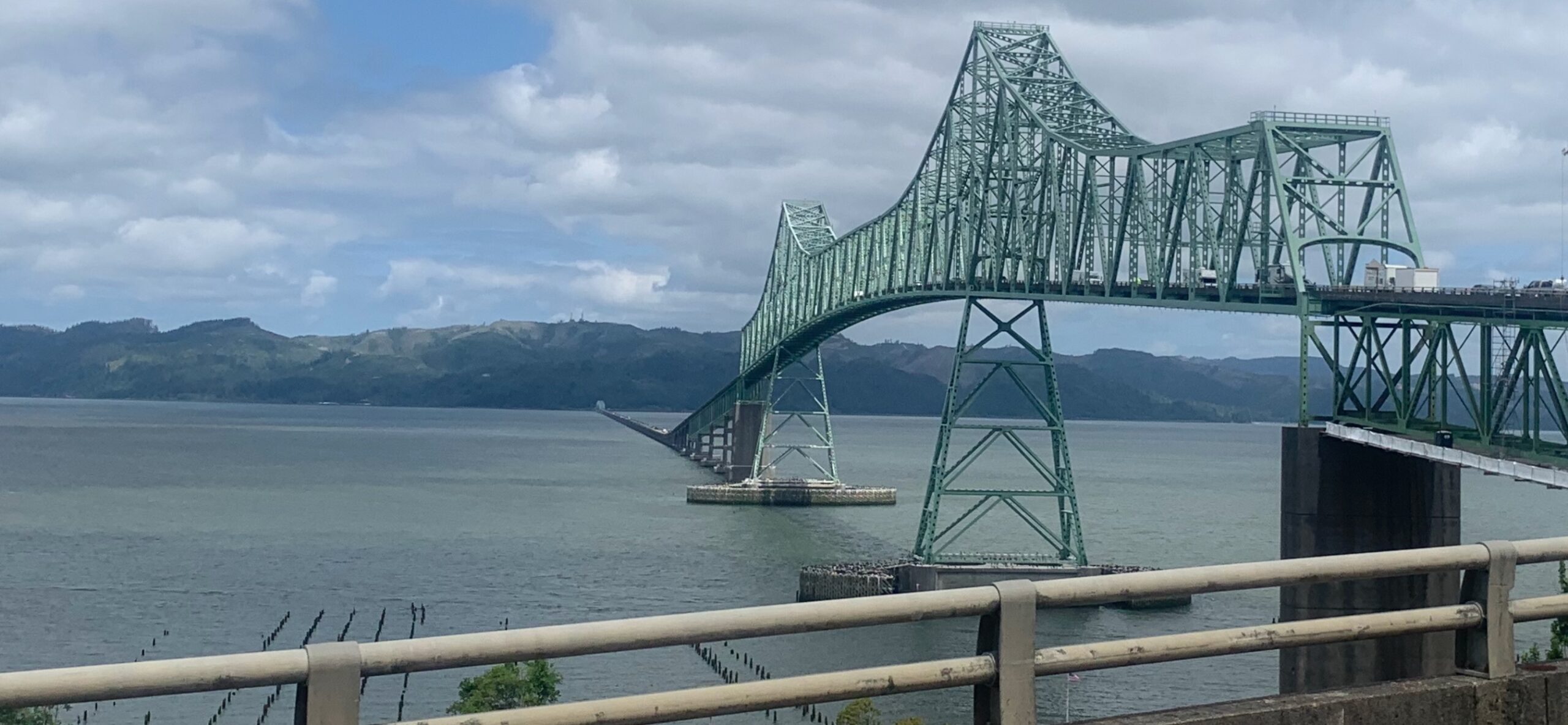
When it was built in the 1930s, it was the longest cantilever bridge span in the US. It’s 800 meters long and stands 64 meters above the river. One good thing about crossing it is that I got a good view of the timber yard . . . which the spoilsport security guard at the entrance would not allow me photograph. The other bridge, the Astoria-Megler Bridge (pictured above) straddles the mouth of the estuary and is four miles (6.7kms) long and stands 61 meters above the water. It was opened in 1966, is the longest continuous truss bridge in America and completes Highway 101, which runs essentially unbroken from Los Angeles to Seattle.
Earlier in the day, I checked out another bridge, also beautiful but rather different. Riding from Odell Lake in Oregon’s Cascade mountains back towards the coast, the road took in the small town of Lowell where, once again I was reminded just how young this country is in places.
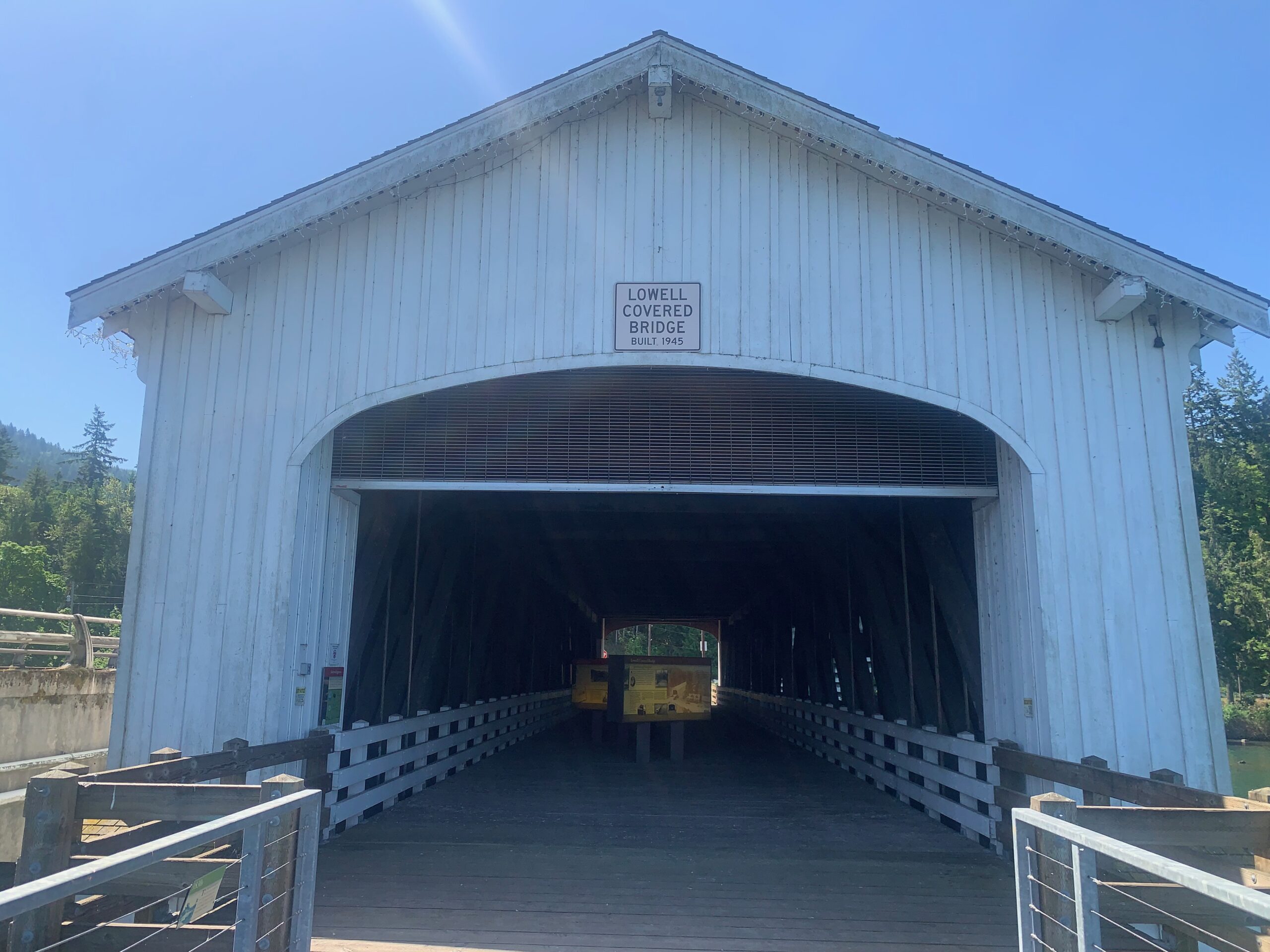
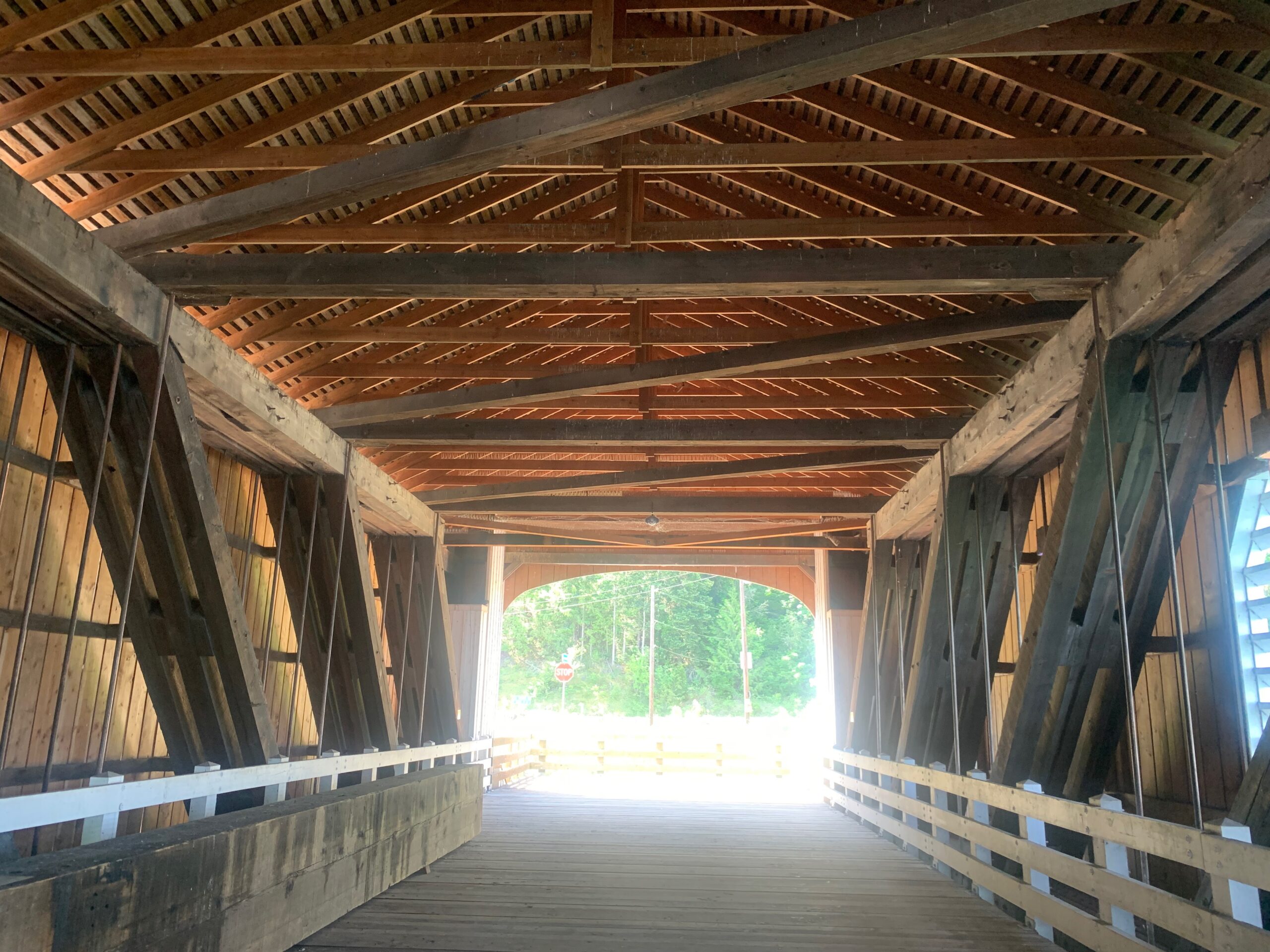
The bridge into Lowell crosses a reservoir is a covered bridge made of timber. It is rather picturesque and dates from 1907 when Lowell itself was then only about 50 years old as a settlement. In the mid-19th century, 1,000 settlers, wagons of men, women and children from Idaho, got lost in the Willamite Valley while trying to trek west into Oregon. They were eventually found by rescuers and, rather than go on, they decided to put down roots where their trail crossed the Willamite River, at what is now Lowell. They were subsistence farmers and loggers. One of them, Amos Hyland, also ran a ferry over the river and did well, as more and more people headed west and had to use his service but so many complained about his fee that the timber covered bridge was eventually built and designed strong enough to carry heavy logging traffic. It was rebuilt in 1953 when it was raised to protect it from being drowned by a new reservoir then under construction.
Today, young boys and Dads fish from off the side of the covered bridge, long since bypassed by a new structure and now used to tell its own story and that of the caravan of 19th century settlers who got lost. They park their shiny pick-up trucks in the car park just down from Lowell town, now tourist destination with cute shops and preserved buildings. Some of the older ones enjoying the sunny day will have heard from grandparents the story of the settlers from Idaho, their ancestors.
The story of opening up the west presents itself once again as I ride down off the great bridge over the Colombia estuary at Astoria. A sign pointing to the right recommends visiting Dismal Nitch, which sounds hilarious but not very inviting. I wheel left where the next sign is for Cape Disappointment, which doesn’t seem a lot better than Dismal Nitch. I am now on the Lewis and Clarke Trail and quickly find myself in the small fishing town of Ilwaco.
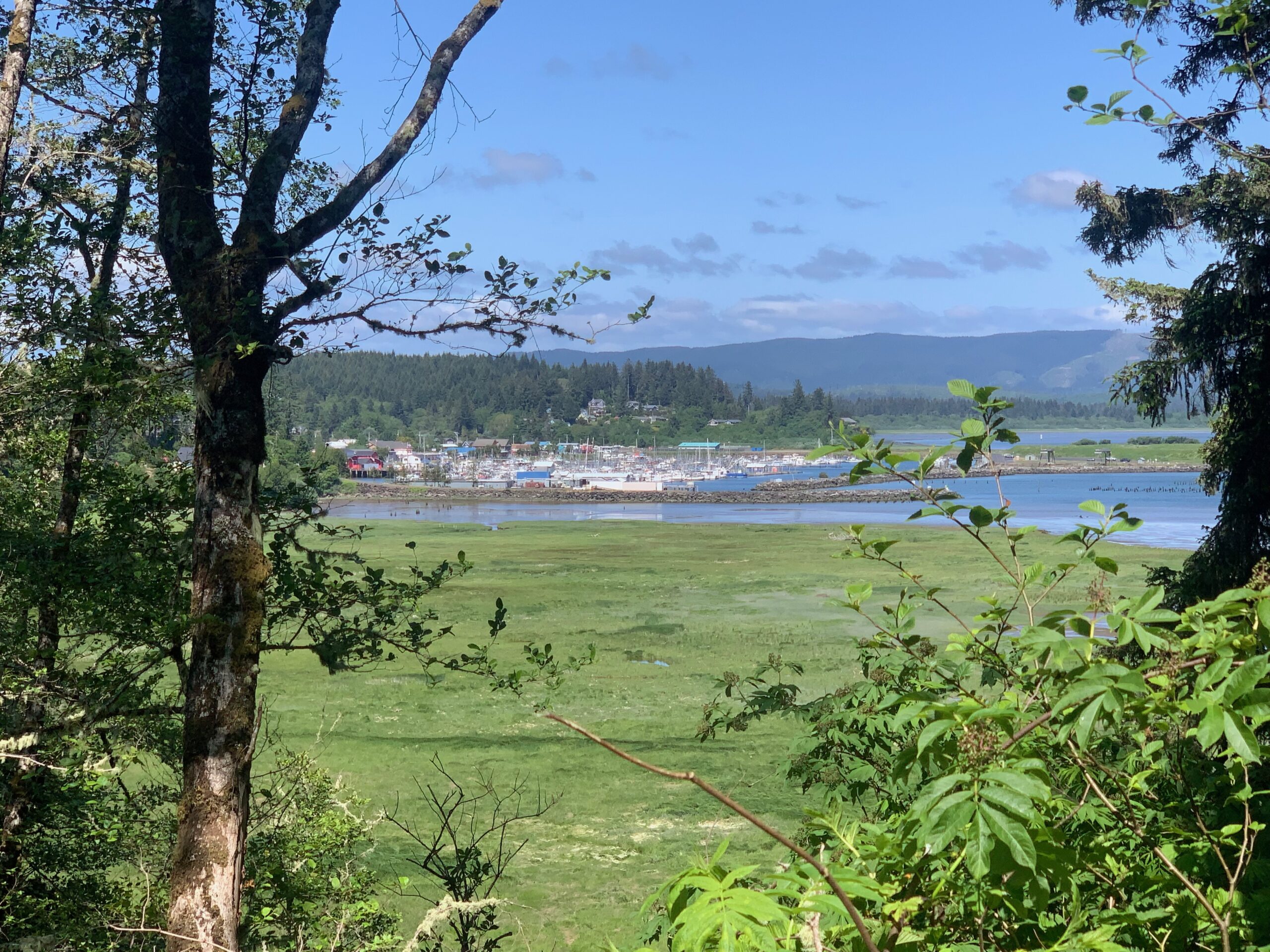
A row of timber and shingle clad buildings facing a harbour full of mid-sized commercial trawlers and sports fishing boats offers chowder and suchlike but is closed because it is Tuesday. Which really is a disappointment.
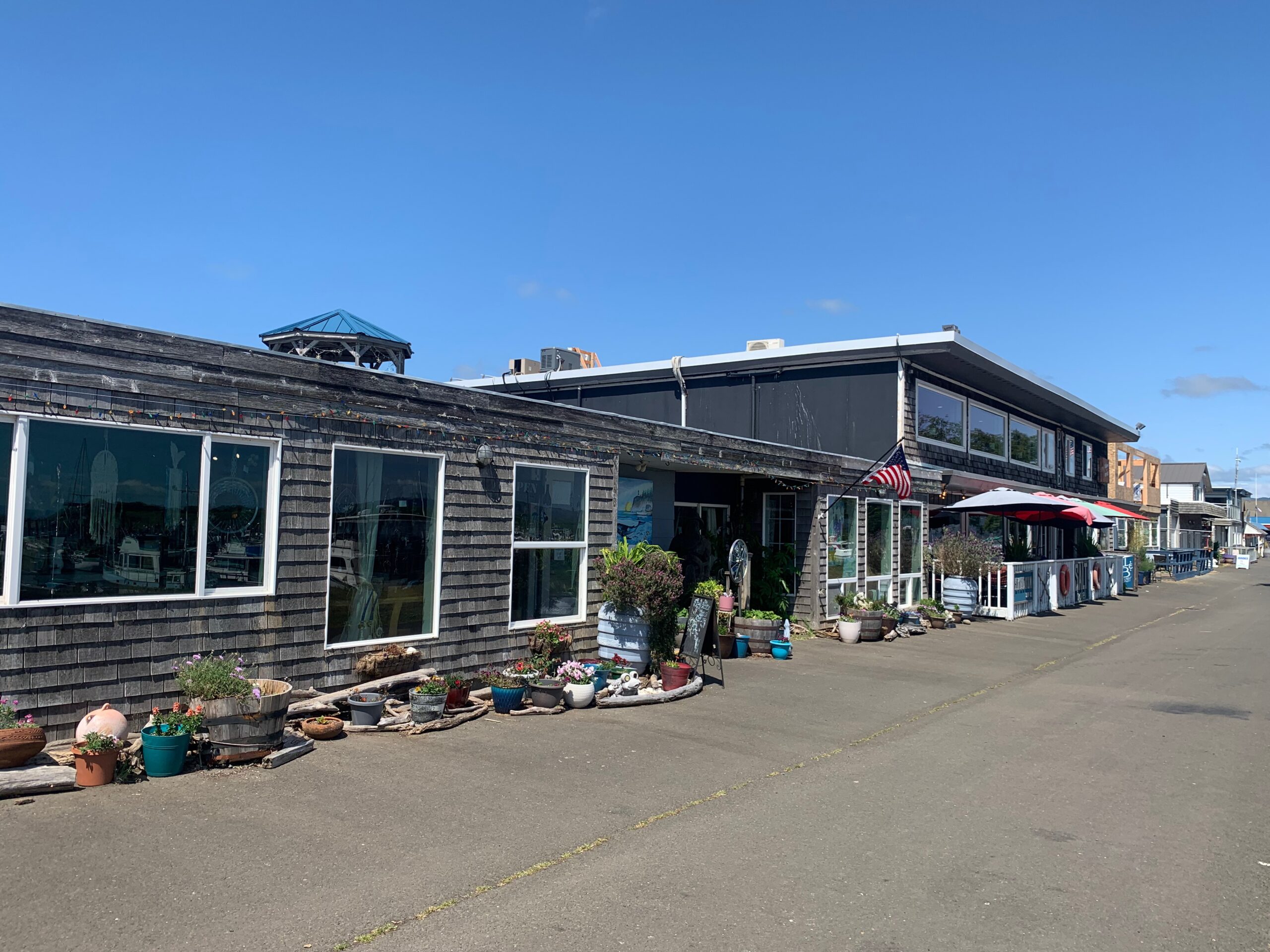
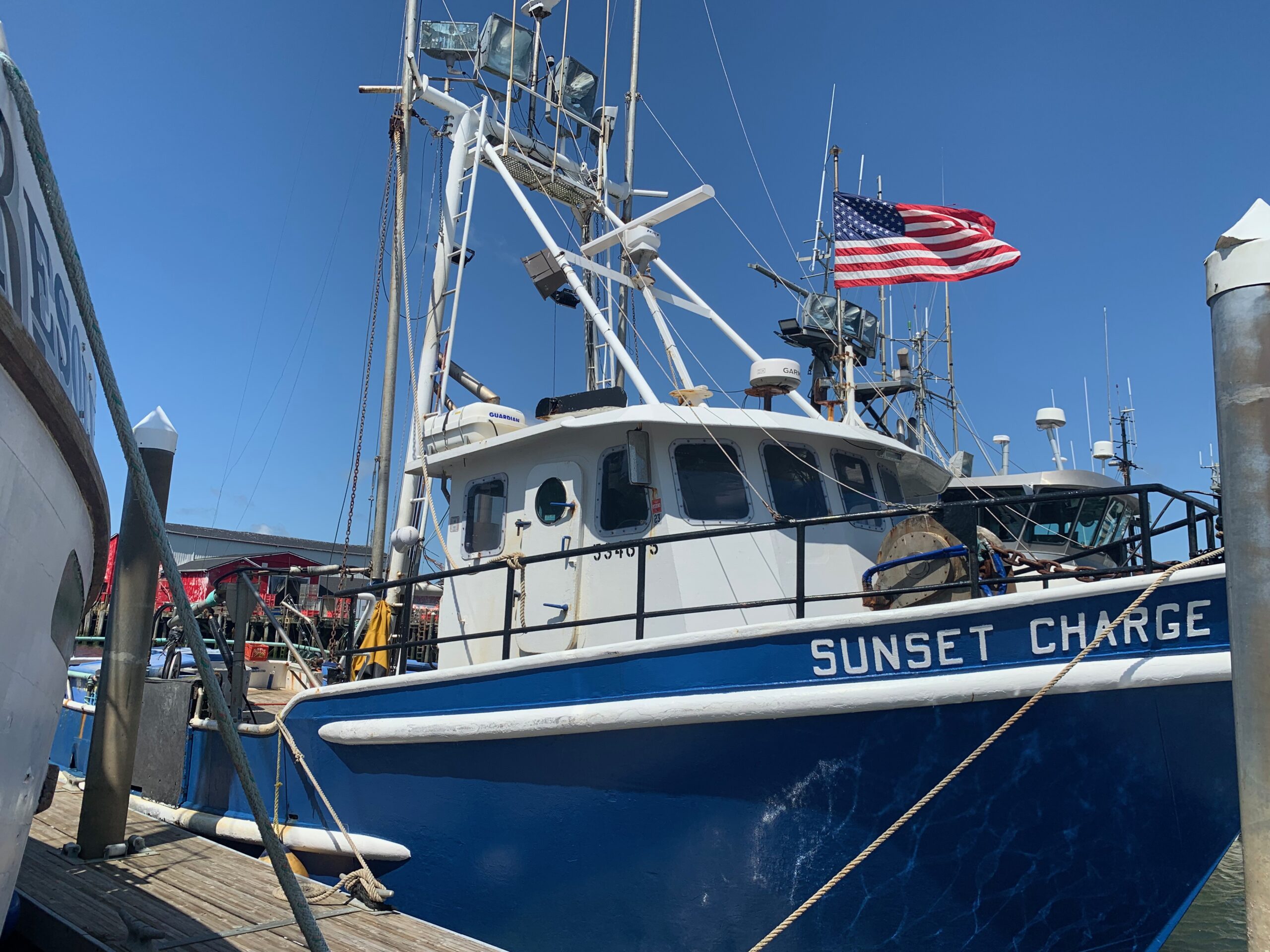
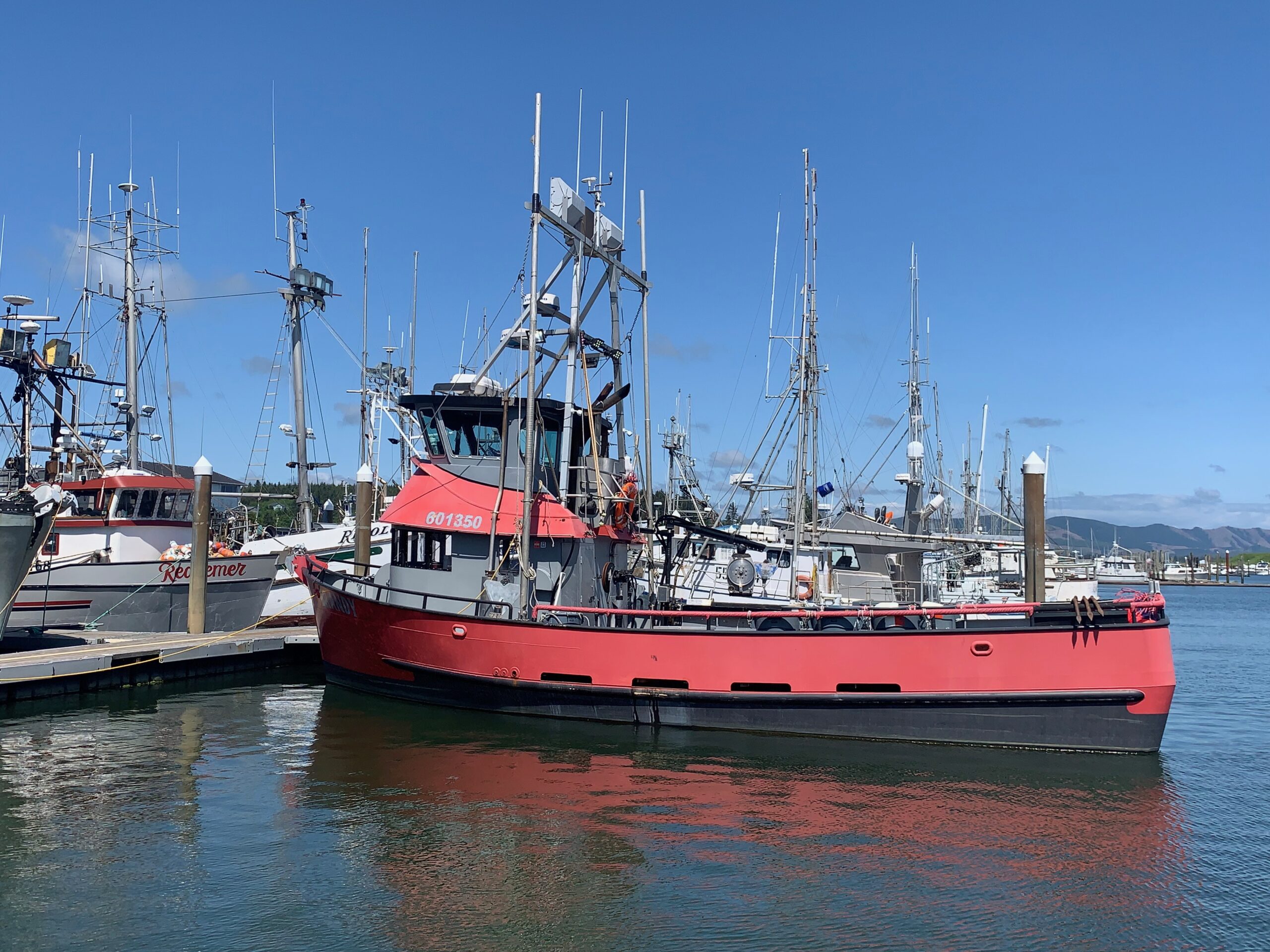
However, the Olde Town Trading Post and Cafe is open and there, the lady who runs it, Luanne Hanes, chats to me and says that I really must visit the Cape Disappointment State Park.
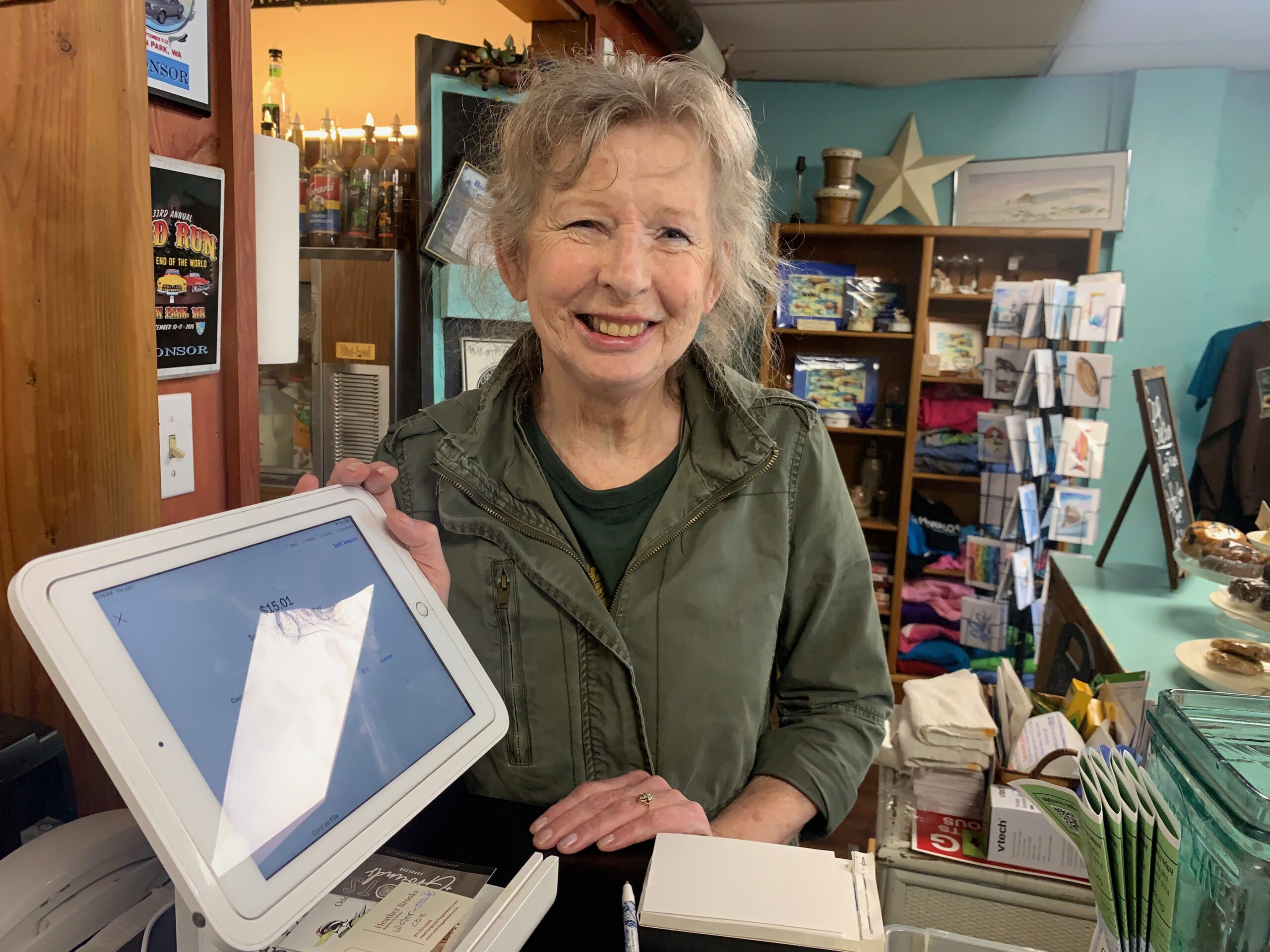
I do and it turns out to be the most beautifully laid out and maintained state park I’ve come across — so much so that I camp there three nights and spend most of two whole days writing in Luanne’s cafe, which is cosy, served great coffee and home-made soup and, crucially, has WiFi.
In 1803, the United States bought Louisiana from France for $15 million. The Louisiana of that time was some 828,000 square miles extending north and northwest from New Orleans, encompassing some 14 of today’s states, in whole or part, right up to Montana — in other words, basically the entire of central USA. Captains Meriweather Lewis and William Clarke Trail were two army officers dispatched after the purchase by President Thomas Jefferson to lead an expedition of discovery across America to the northwest and the Lewis and Clarke trail, a tourism offering, essentially piggy-backs their journey. Cape Disappointment was so named by an earlier English explorer, Captain John Meares. In 1788, he rounded the headland from the Pacific in search of the mouth of the Columbia and thought he had entered just another bay, rather than the estuary. Hence his disappointment. Approaching from the land side, however, Lewis and Clarke were far from disappointed and carved the date of their find November 18th 1805 on a tree trunk. It was Lewis, apparently, who coined the memorable description of the small bay close to the mouth of the estuary where one crosses it today. Trapped there by a storm for six days, he apparently dismissed it later as “that dismal little nitch”.
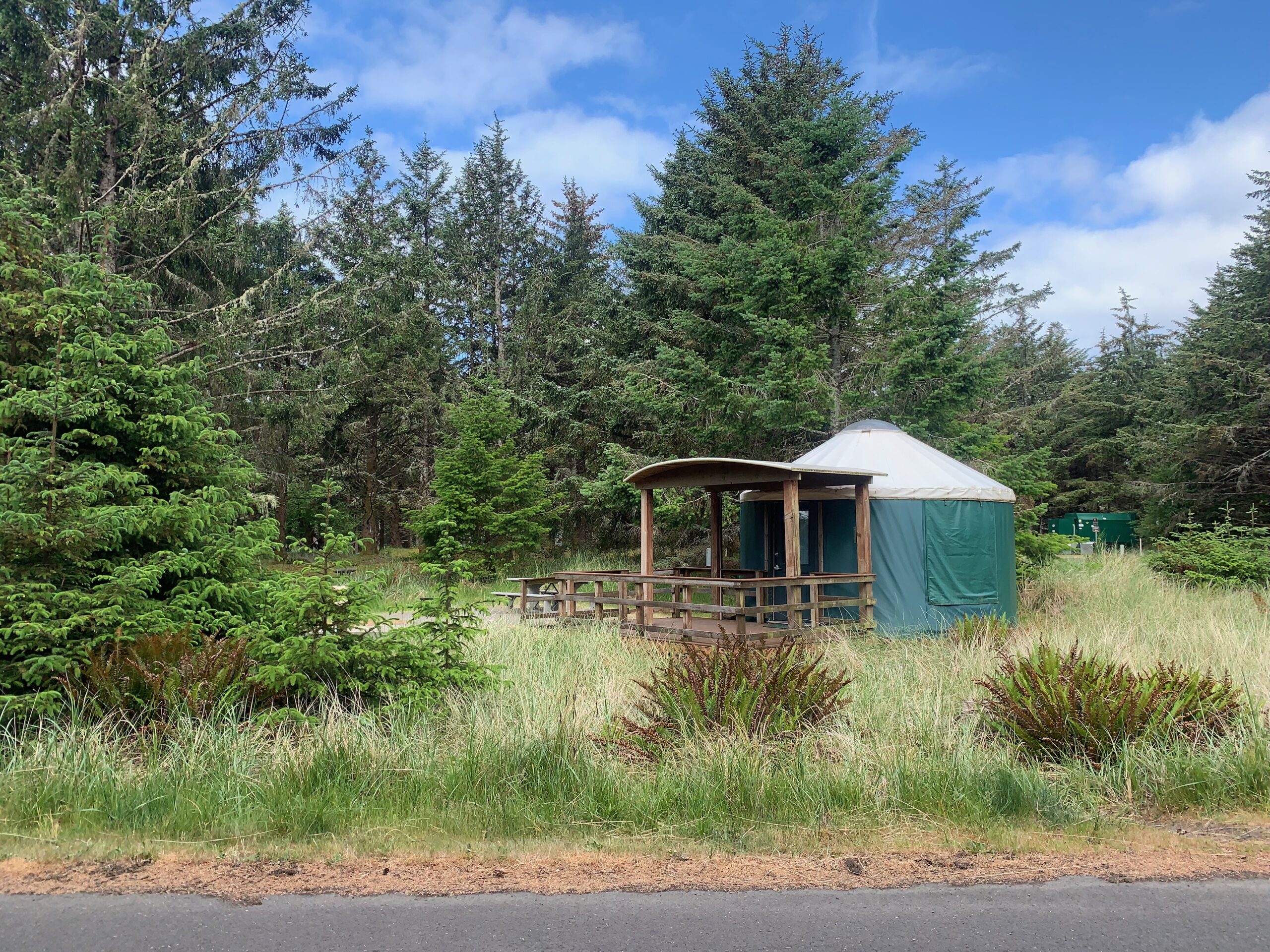
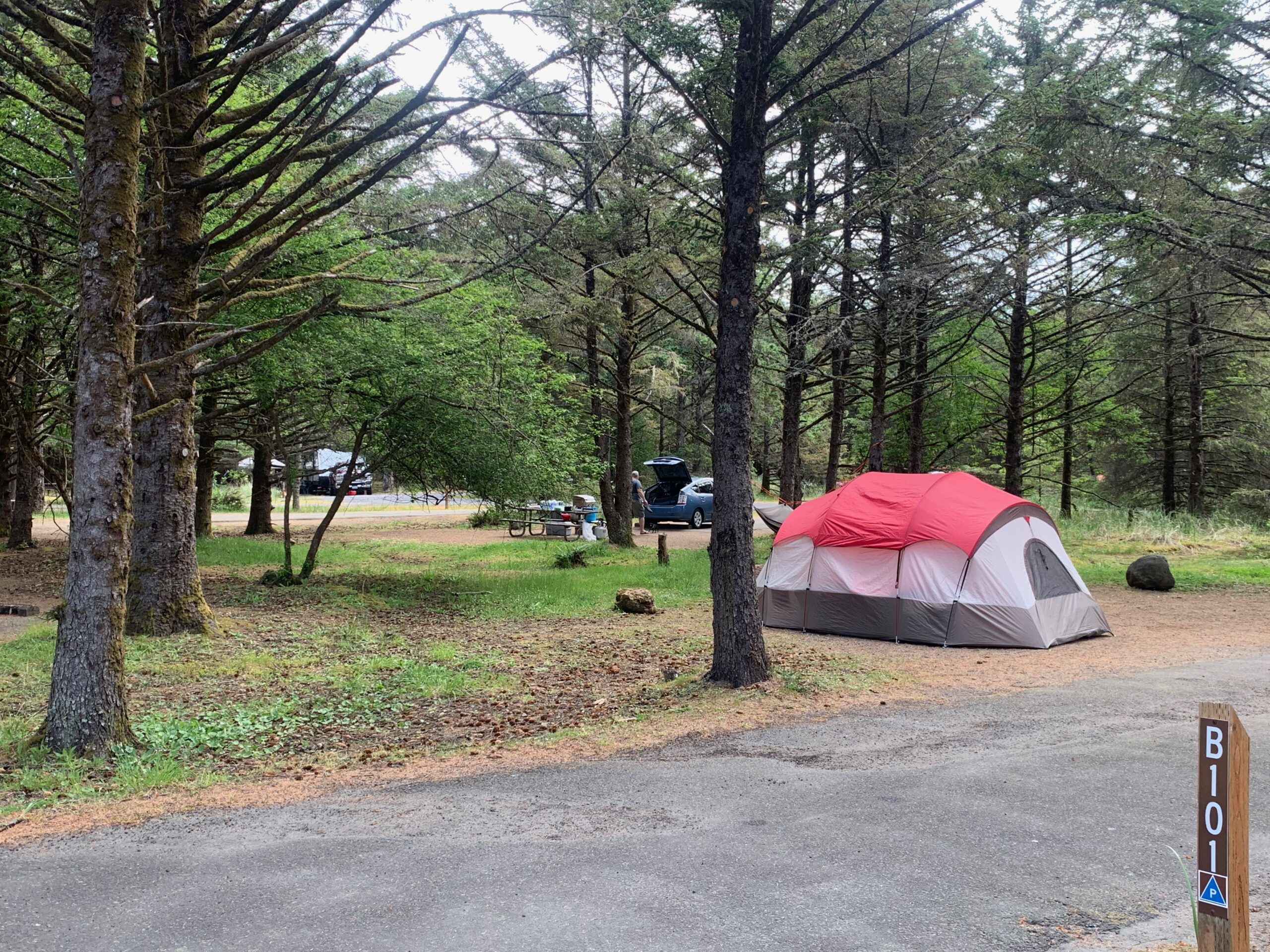
Today, on either side of the estuary, the two states of Oregon and Washington have created state parks that make the most of the sea, the landscape and the history of the area’s discovery. My stay was on the Washington side and Cape Disappointment State Park really is fantastic — 231 sites for RVs, tents and also some yurts, all spread out over a vast area of sandy hillocks, clusters of pine trees and grassy areas for play, plus loos and showers with hot water. You can walk the length of great sandy beaches, or the park itself, or light a fire as the sun dies and sit there with a glass of something or other and drink in the lovely-ness of it all. There is such a soothing joy listening to the noises of nature — the low rumble of waves dying on a beach, a breeze rustling the trees, and birdsong. On my second morning as I awoke, I watched a racoon waddle off into the undergrowth. My late nature-loving Irish Times colleague Michael Viney would have liked it, I’d say.
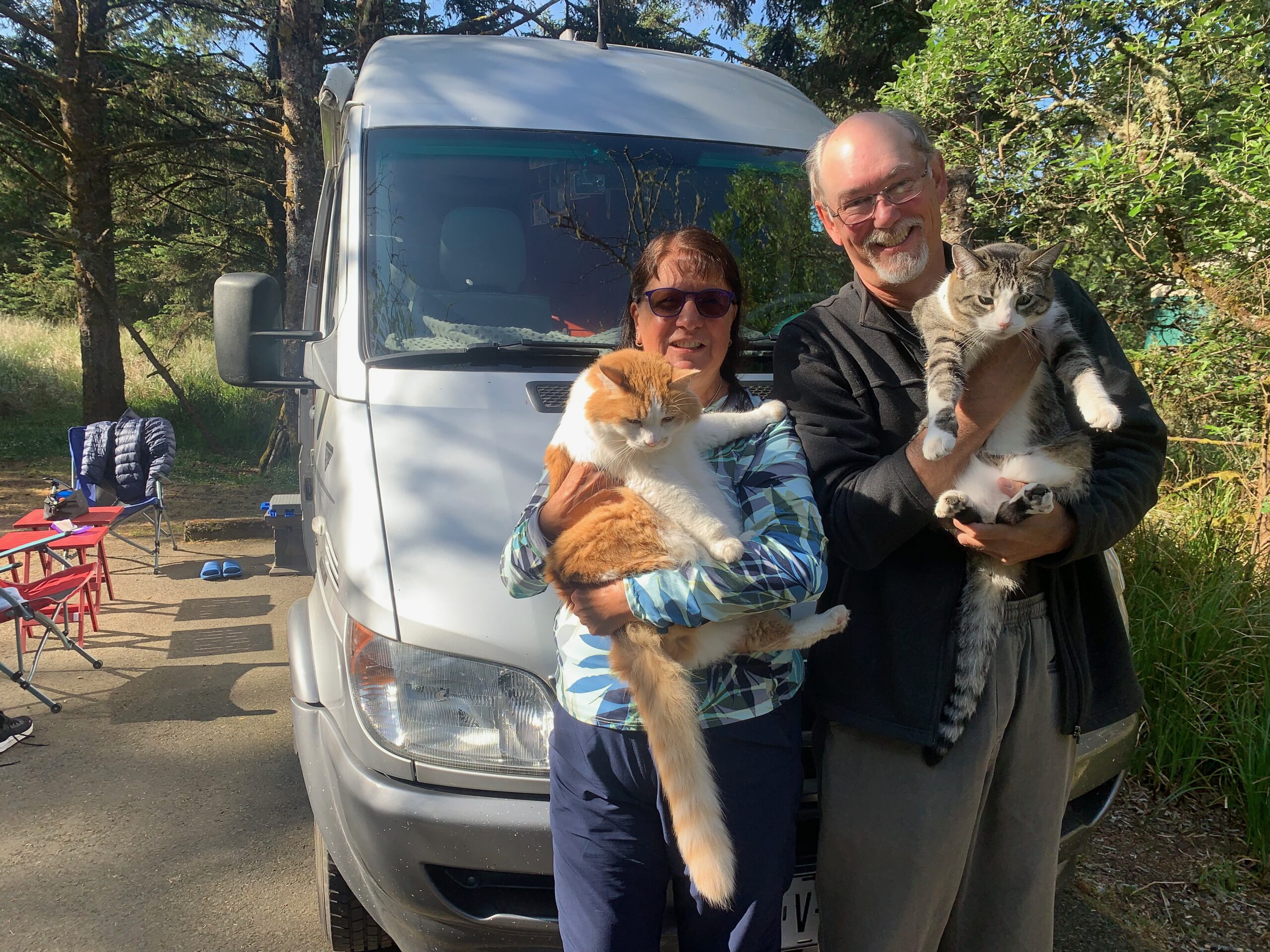
Next site but one to me was occupied by two gentle Canadians, Will and Cindy from Calgary, and their adventurous travelling cats, Jasper and Trixy. We had many easy chats over the few days, as the cats hunted mice. Will and Cindy’s calm manner, easy charm and relaxed conversation has whetted my appetite for Canada, which is just down the road.
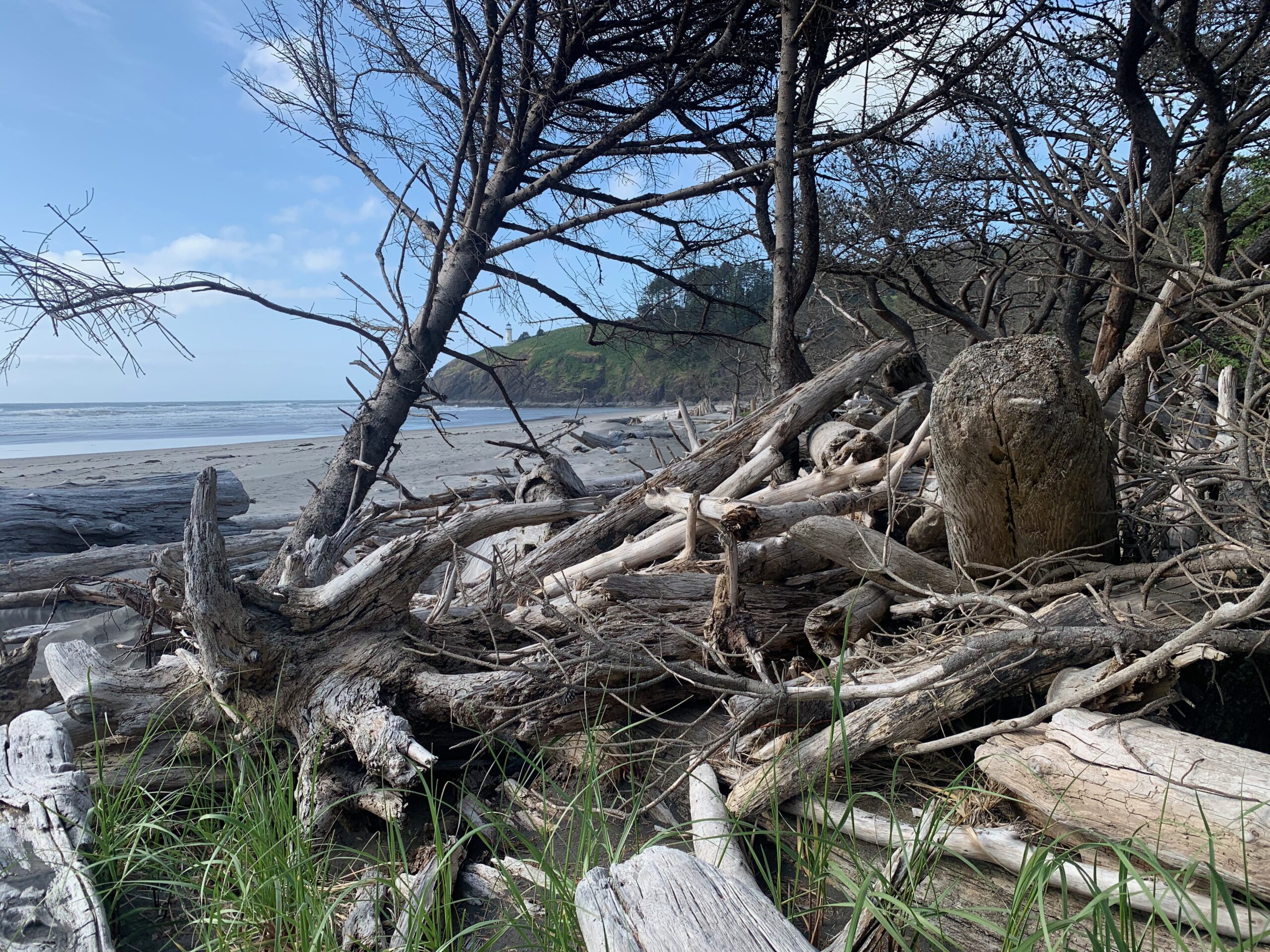
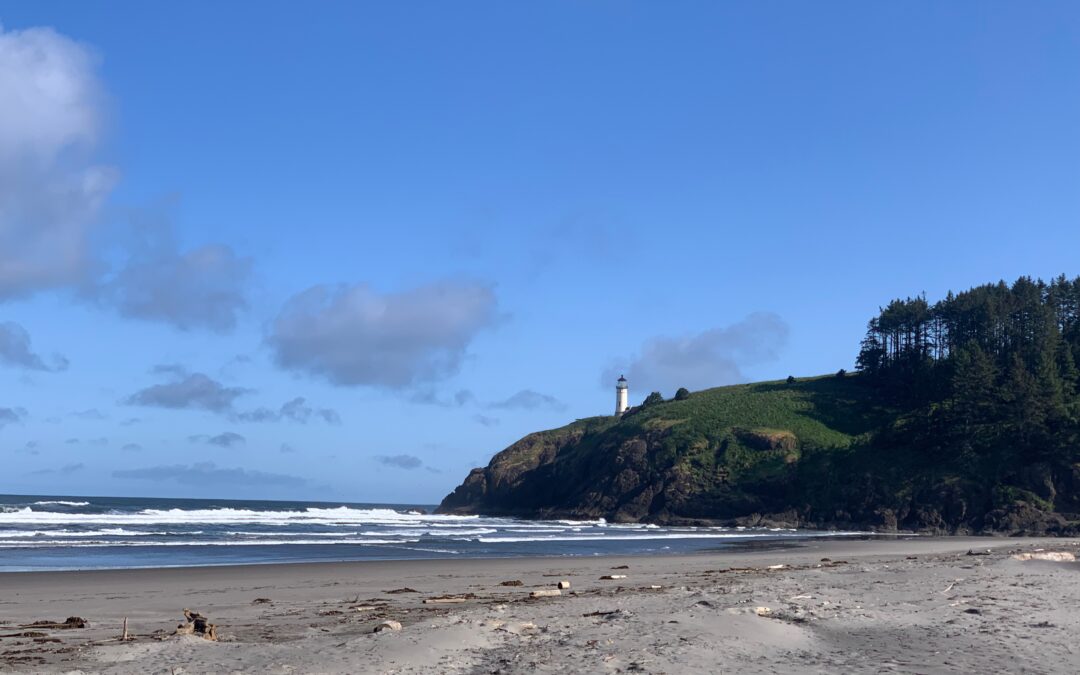
As a native of the Portland area, I can assure you that even though Portlanders might think so, the capital is still Salem about 50 miles to the south. I enjoyed meeting you at Dave and Shao-Ying’s. I’ve now read your entire blog and have greatly enjoyed it.
Thanks David; enjoyed your company as well. Am now deep into Canada ands really enjoying the country. Oregon was stunning and I’d love to return and see more of it… maybe even Portland too!
Yer trucking along nicely there Peter; good choice avoiding Portland but north of the Colombia River is very pretty, with great roads, if twisties are yer thing. I assume you’ll be heading to Port Angeles and taking the ferry to Victoria and ‘The Island” as it’s called in the Great White North? An option is to ride all the way north to Port Hardy (via Tofino and Telegraph Cove perhaps, which is a lovely wee spot for some graze), then a spectacular ferry to either Bella Coola or further north to Prince Rupert. Pretty isolated part of the world but beautiful. Anyway, safe riding.
If your northbound routing takes you through Prince George there is room in my garage next to my 890 for secure overnight parking.
That’s very kind of you; many thanks. Right now, I’m in Nelson, and hope on Tuesday or Wednesday to start the trek north west to Whitehorse and then Dawson City. Looking at the map, I can see that I may well pass Prince George so you never know! Best wishes — Peter
The road up to Kaslo on either side of Kootenay Lake is beautiful, then there’s 2 routes out of Kaslso (31 west to New Denver or north via Trout Lake) to catch the ferry, both good fun. Watch for those pesky deer!!
Thanks for the nice write up Peter, it was so nice meeting you. And my customers still mention you and your beautiful motorcycle!
Ah Luanne, the pleasure was all mine. You were so kind to me and are such a pleasant woman. Thank you and your customer friends very much. I’d love to think I’d be back one day… and ya never know!